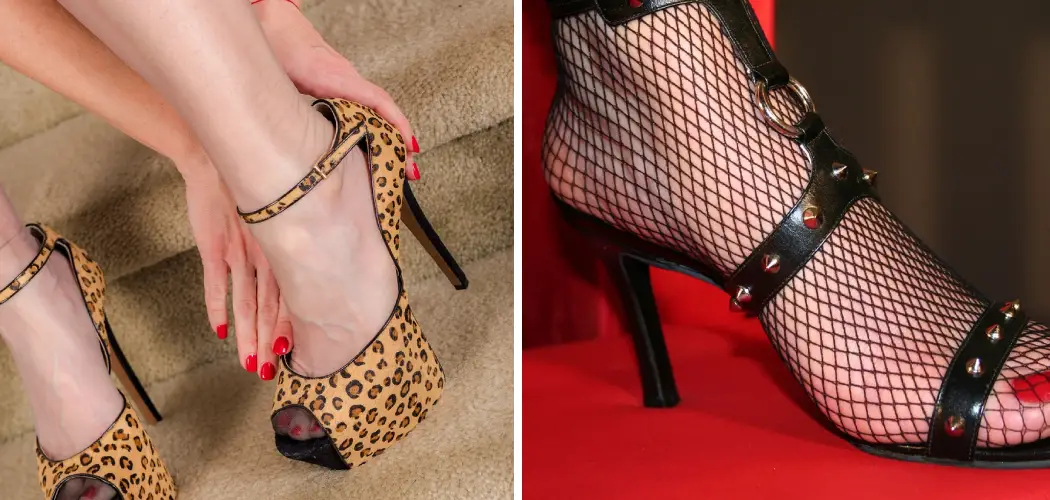Do you suffer from bunions, but still want to wear your favorite pair of heels? We all know how fabulous and fashionable heels can look, so it’s only natural that we would want to include them in our wardrobe. But sometimes the physical realities of life can stand in between us and a full-style experience.
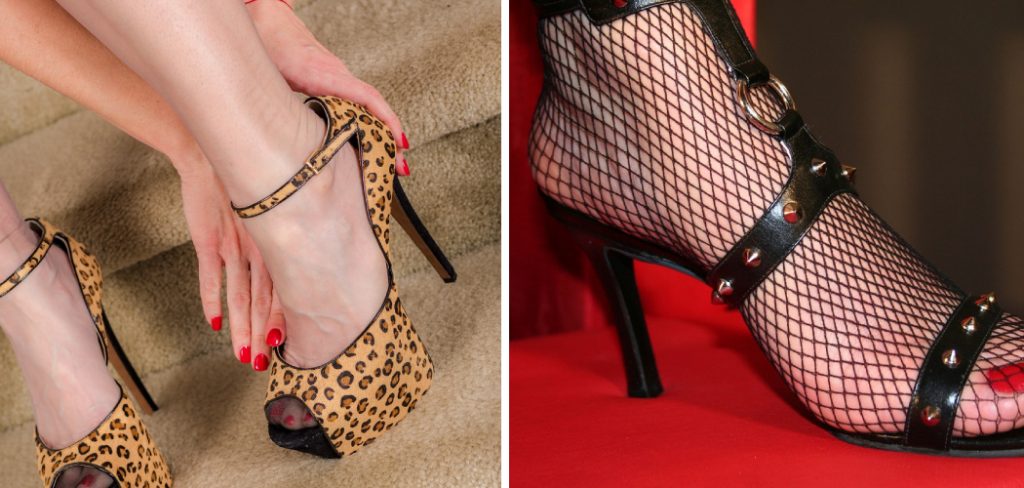
That is why today we will be exploring the topic of ‘How To Wear Heels With Bunions’. By learning some simple tips and tricks on how to make this combination look great while minimizing discomfort, you will be able to rock your next outfit with maximum confidence!
11 Step-by-step Guidelines on How to Wear Heels With Bunions
Step 1: Choose the Right Shoes
When selecting shoes, look for those designed with extra cushioning to reduce pressure on the bunion. Try to find options that are roomy enough to accommodate the bunion’s protrusion, with a wide toe box.
This will give your foot the extra space it needs to be comfortable. Avoid pointed-toe shoes, as this can aggravate the bunion even further. If you can, try to find shoes that are adjustable. This will allow you to adjust the shoe’s fit as needed.
Step 2: Go for Low-height Heels
Higher heels intensify the pressure on the bunion and can cause additional pain. Instead, opt for low or mid-height heels (1 ½ inches or less) which will provide extra stability. But if you must wear higher heels, make sure to take them off occasionally to allow the area around the bunion some breathing room.
It is also recommended that you only wear heels for a few hours at a time. It is better to prioritize comfort over fashion in this case. But if you do, just make sure to take breaks and switch out of your heels every so often.
Step 3: Consider Wedge Heels
Wedge shoes offer more support than traditional stiletto styles and combine fashion with comfort. To find exactly what you need, look at wedge heel shoes that feature a wider base to help distribute your weight evenly. This will reduce the pressure on the bunion. It is also important to find the right fit. The shoe should be wide enough to provide adequate room for the bunion, while at the same time providing enough stability for your foot.
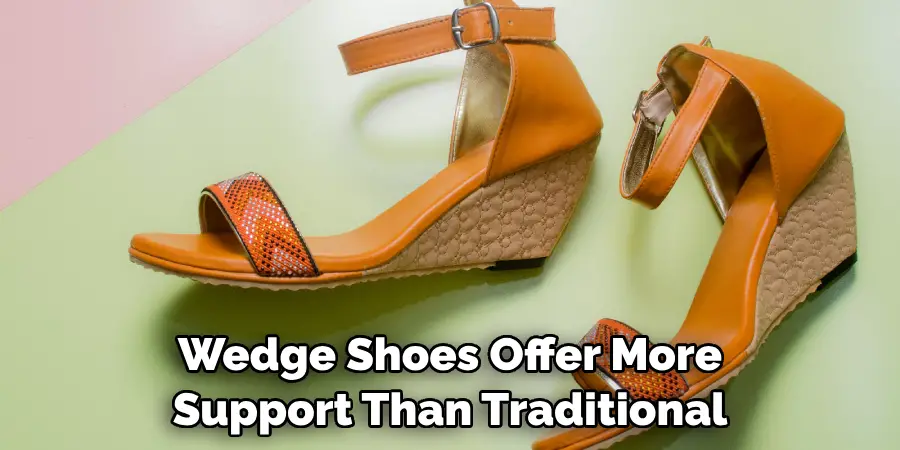
Step 4: Wear Bunions Pads/Cushions
Bunion pads/cushions can be used to fill any gaps between the bunion and the shoe. This helps to improve comfort and allows you to enjoy your heels longer. It is best to purchase an orthotic pad specifically designed for bunions, as this will provide the right amount of cushioning and arch support. This will also help to reduce the pain and pressure on your bunion.
Step 5: Invest in Insoles
Look for orthopedic insoles which are specifically designed to provide extra cushioning and support. These will help absorb shock, reduce pressure points, and keep your feet feeling great all throughout the day. It is also important to make sure your insoles are the correct size and fit properly in your shoes.
Step 6: Wear Heel Grips
Heel grips are small pieces of foam or gel that you place inside of your shoes. They effectively keep your foot from slipping while walking, thus helping to reduce discomfort associated with bunions. But make sure to purchase heel grips that are the correct size, as too-big ones can cause more pain and discomfort.
Step 7: Stick with Booties and Short Boots
Longer boots can put too much pressure on the bunion. Instead, look for booties and short boots that provide more ankle support without squeezing your bunions. This will help to keep the area comfortable while still allowing you to enjoy your favorite style of footwear. If you must wear long boots, opt for those with a zipper or adjustable laces to ensure that the fit is not too tight.
Step 8: Wear Heels with Jeans or Trousers
Pairing heels with jeans or trousers will help to give you extra stability while walking around in them. Look for shoes with a wide enough opening that they don’t rub against the bunion when putting them on. This will help to reduce any discomfort that you may feel. It is also important to make sure the material of the jeans or trousers is not too tight, as this can contribute to bunion pain and discomfort.
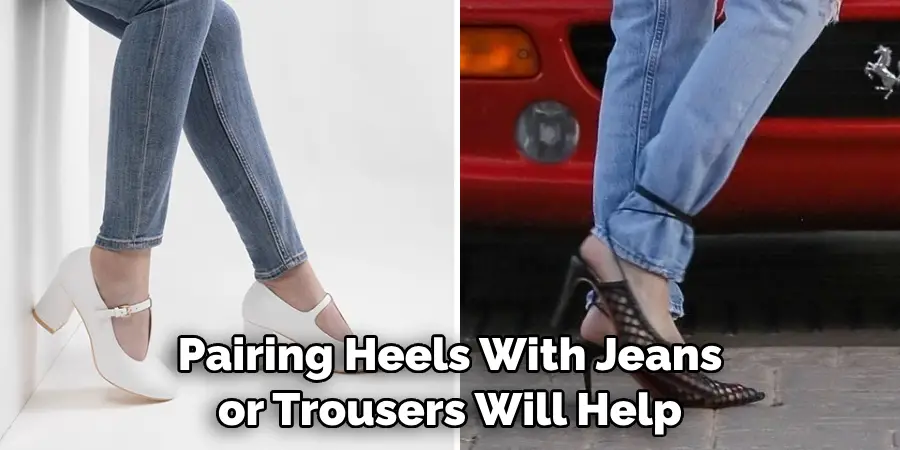
Step 9: Consider Pointed Toes or Open-Toe Shoes
Pointed-toe shoes are often recommended as a great option for people who suffer from bunions because they have plenty of room in the front. Alternatively, open-toe shoes can also provide relief for those with bunions as they don’t put too much pressure on the bunion area. It is important to make sure that the shoe fits properly and does not rub against your bunion.
Step 10: Take Breaks
If you are planning to wear your heels for an extended period of time, make sure to take breaks in between and elevate your feet whenever possible. This will help reduce inflammation and pain caused by wearing heels with bunions.
But if you find that your feet are still hurting after taking off the shoes, it is best to switch to more supportive and comfortable options. It is also important to make sure that you only wear your heels for a few hours each day.
Step 11: Wear Compression Socks or Stockings
Compression socks or stockings can be worn underneath your clothing to provide extra support while walking in heels. They also help keep swelling down which is very beneficial when wearing heels with bunions. Always make sure to buy compression socks or stockings that are specifically designed for bunions, as this will guarantee maximum comfort and relief.
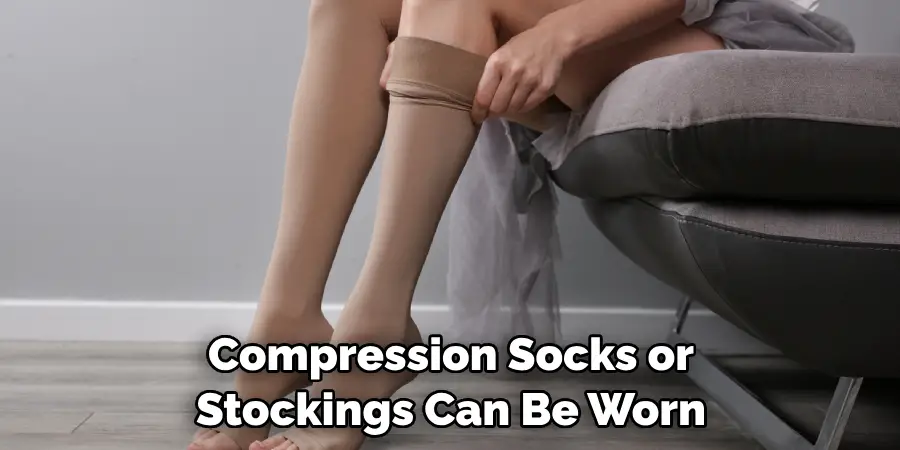
By following these simple steps on how to wear heels with bunions, you will be able to enjoy wearing heels with bunions in comfort and style. So go ahead, experiment with different styles, and find the perfect pair of shoes that will let you shine!
Remember to always consult a doctor or specialist if your bunion pain persists, as it could be a sign of an underlying condition. With these tips in mind, you’ll be ready to rock your next look with confidence! Good luck!
Do You Need to Take Advice From a Professional?
If the bunion is severe, it’s best to consult with a doctor or podiatrist who can provide you with customized advice and suggest the best treatment options for your condition. They can also provide you with custom orthotics, which are designed to help reduce pain and improve the fit of your shoes.
Orthotics can also be helpful in providing extra cushioning and support for those with bunions. If you do consult a professional, they may advise you on lifestyle changes, such as wearing more supportive shoes or using special padding to reduce the pressure on the bunion. They may also recommend exercises and stretches that will help strengthen the muscles around your bunion and reduce discomfort.
Frequently Asked Questions
Q: Can I Wear Heels With Bunions?
A: Yes, you can wear heels with bunions as long as you choose the right shoes and take the necessary precautions. Look for shoes with cushioning, low or mid-height heels, and a wide-toe box to reduce pressure on the bunion area.
Q: What Are The Best Shoes To Wear With Bunions?
A: Wedge-heel shoes provide more support than traditional stilettos and combine fashion with comfort. Pointed-toe or open-toe shoes are also great options as they have plenty of room in the front. Booties and short boots can also help to give you extra stability without squeezing your bunions.
Q: How Can I Make Heels More Comfortable For Bunions?
A: You can make heels more comfortable for bunions by using cushions/pads, insoles, heel grips, and compression socks or stockings. Additionally, take breaks in between wearing your heels and elevate your feet whenever possible to reduce inflammation.

It is important to remember that although you can wear heels with bunions, it is not recommended for extended periods of time. If you experience any pain or discomfort while wearing them, discontinue use immediately and consult a doctor or specialist if necessary.
By following these guidelines on how to wear heels with bunions, you will be able to enjoy your favorite look in comfort and style!
Q: What is the Best Way to Prevent Pain Associated With Wearing Heels and Bunions?
A: The best way to prevent pain associated with wearing heels and bunions is to choose shoes that are designed with extra cushioning, have a wider toe box, and feature low or mid-height heels. Additionally, use cushions/pads, ins
Conclusion
Ultimately, wearing heels with bunions is possible if you choose the right pair of shoes and practice the tips outlined in this blog post on how to wear heels with bunions. No single factor determines the success of discomfort-free days in heels, but it is important to start with supportive shoes that fit properly. Also, strive to strike a balance between keeping your feet comfortable and looking stylish in any outfit.
As you get used to wearing differently designed footwear, look for features such as padded insoles or wide-toe boxes to help soothe any foot pain caused by bunions. Finally, don’t be afraid to experiment and find what works best for you. With these tips in hand, there’s no need to shy away from wearing heeled shoes – why not start styling them today?

